| We camped at Clarksboro NJ, about 15 miles south west
of Philadelphia. No local public transport but we took the camper to a 'park
and ride' at Woodcrest and then took the train into central Philadelphia. $1
to park and $10 for the train. You come out in the centre with tall
buildings all around. | 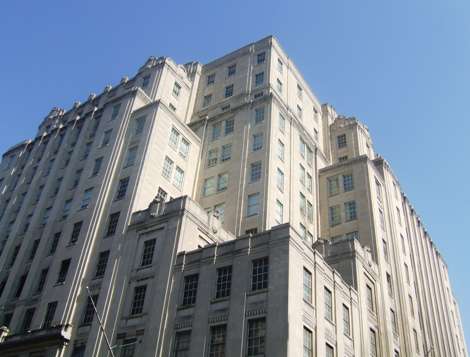 |
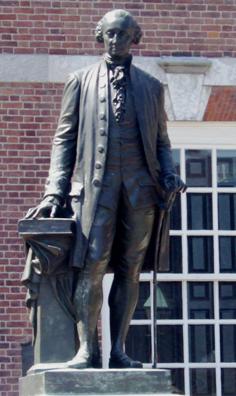 |
You don't move far without being reminded that Ben Franklin is the father
figure in these parts. Philadelphia is at the heart of early American
history and we duly joined the tours for the historic parts and the
documents of the Founding Fathers. |
| As with most places like this there are a whole raft
of people catering for the tourists with things like this horse and carriage
ride. | 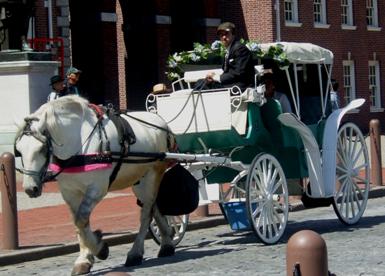 |
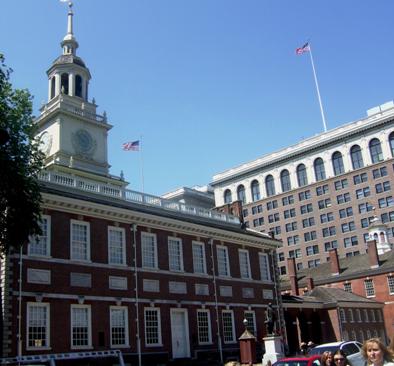 |
This is the historic Senate building from where the US was briefly governed
in the 1780s. There is tight security to get into this building complex but
there are some expert National Park guides once you are in. |
| This is the old State courthouse where the original
Supreme Court used to preside. It is difficult to hide our accents and we
were treated to an excellent treatise on the differences between the US and
UK legal systems by the resident expert. | 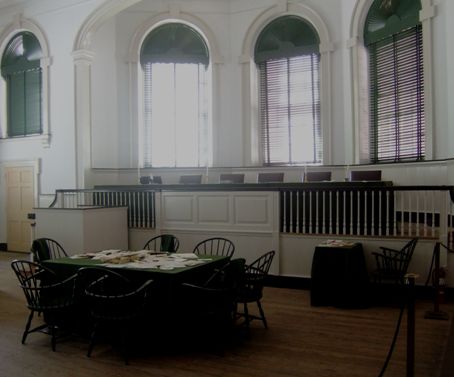 |
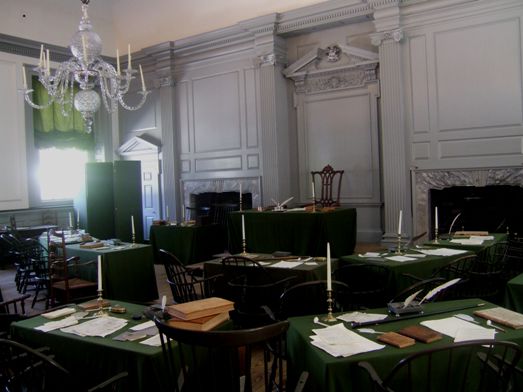 |
This is the room in which most of the discussions on the Declaration of
Independence took place. Most of the furniture is replicas but the speaker's
chair is the original. There is half a sun at the top of the back and
Franklin passed comment that he had decided it was a rising rather than a
setting sun. |
| This is one of the original copies of the Declaration
of Independence of 1776. There were several versions differing in minor ways.
This is the copy read by Colonel John Nixon to inform the citizens of
Philadelphia what had been done on their behalf on June 8th 1776. It is now
kept under subdued lighting with no flash photography permitted. There are
three other similar documents on show. | 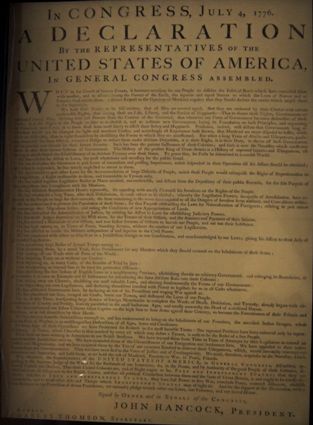 |
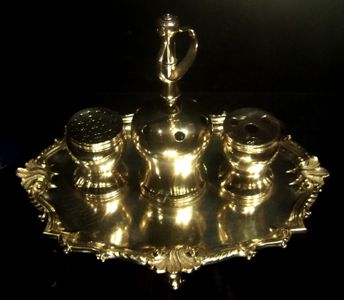 |
There are a few other historical artefacts. Most are now housed in
Washington. This is the inkstand made by Philip Syng and probably the one
used by the signatories to sign both the Declaration of Independence and the
US Constitution (Sept 17th 1787). |
| This is the council chamber used by the congress. Note
the eagle on the ceiling and the seal woven in the carpet on the floor. It
is all reproduction today. | 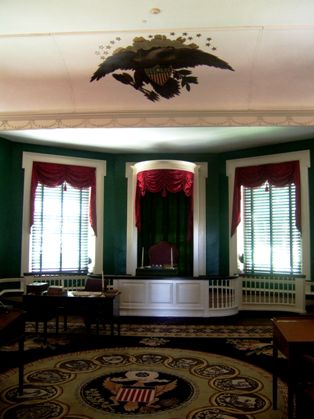 |
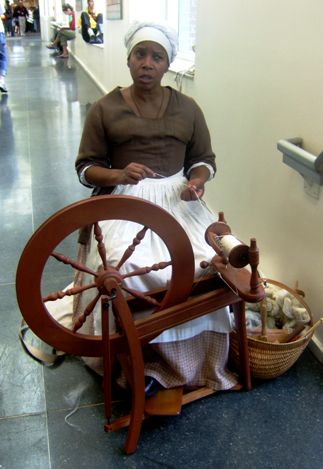 |
The Americans like to create an atmosphere and have people demonstrating
things from the period. This lady was in the information centre and was
doing a little spinning, a lot of talking and posing for photos. She was
actually very knowledgeable about both the period and the skills. Jan spent
a long time talking to her. |
.
| One of the other sights to see in Philadelphia is the
Liberty Bell. This is the real bell, originally made in Whitechapel, England
in 1752. It cracked when first sounded, was recast by Pass and Stowe in
Philadelphia in 1753 (twice) and subsequently cracked again. The crack
is now 0.5in wide and 24in long. The bell is 70% copper and 25% tin. It cost
£150 13s 8d. Contrary to popular belief it is not thought to have been
sounded in 1776 since both it and the steeple were in poor condition. It is
called the Liberty Bell because of the inscription on it:
By order of the Assembly of the Province of Pensylvania for the State
house in the City of Philada 1752
Proclaim Liberty thro' all the Land to all the Inhabitants thereof. -
Levit. XXV.10. | 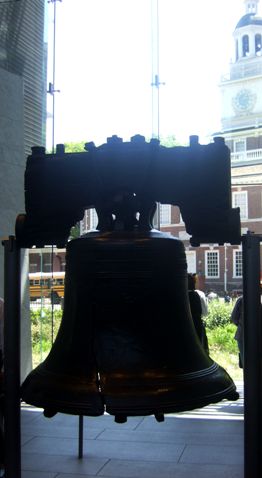 |
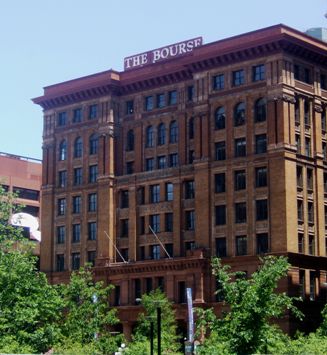 |
Philadephia is a major city of commerce and a significant port. So there are
many important building of impressive stature and architecture. The Bourse
is just one example at the heart of the old city. |
| This is a widely available map of the period. The
Great Lakes are shown much further south than they really are and the detail
west of the Mississippi is very scant. It is described as: 'An accurate
map of North America. Describing and distinguishing the British, Spanish and
French dominions on this great continent; according to the definitive treaty
concluded at Paris 10th Feby. 1763. Also all the West India Islands
belonging to, and possessed by the several European princes and states. The
whole laid down according to the latest and most authentick improvements, by
Eman. Bowen, geogr. to His Majesty and John Gibson, engraver'. | 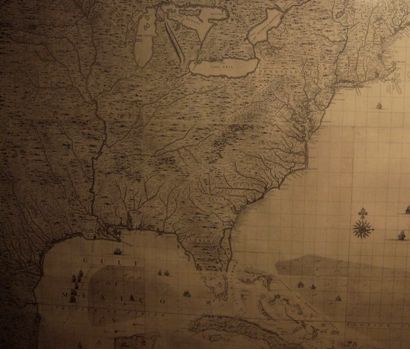 |
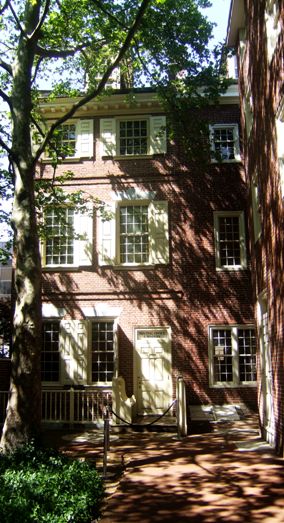 |
Ben Franklin's house is no longer there. It was in a courtyard behind a row
of offices which he also owned. This one was a printers shop as viewed from
where his house would have been. |
| Next door was a post office because, amongst many
other things, Franklin was the postmaster general for a while. Above is a
small postal museum which has a display of space related stamps on. But I
preferred this shot of two famous contemporaries. | 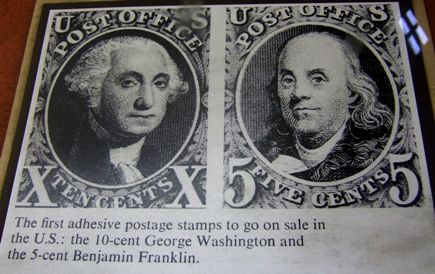 |
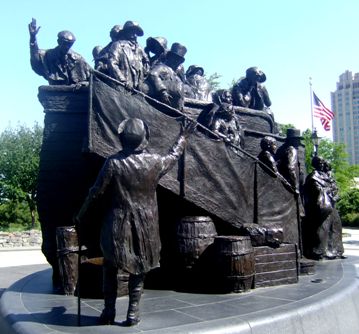 |
Out towards the riverfront is an Irish memorial commemorating the million
Irish migrants who arrived here in the 1840-50s. Theoretically it was travel
to a land of great promise but the US did not treat them much better than
the English did. Their worst crime was being catholic. Although by 1850, 18%
of the population was Irish in origin, jobs frequently said 'No Irish need
apply'. They were often perceived to be a lower and less evolved form of
humanity. Listening to the current immigration debates now relating mainly
to the Mexican immigrants here, not much seems to have changed. |
| The city is separated from the waterfront by lanes of
traffic reminding us of the influence of the motor car in this society. The
suspension bridge also carries the railway line but you are not allowed to
take photographs from the train since 9/11. | 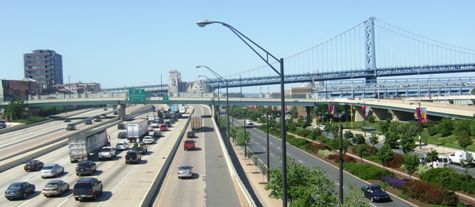 |
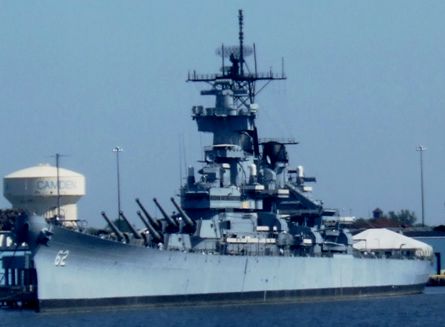 |
Most big cities have a relic from the militaristic past and this battleship,
now a floating museum on the other side of the river is Philadelphia's
example. Actually it is moored in Camden , New Jersey and the name of the
ship is USS New Jersey. Built in 1942, she saw service in the later stages
of the second world war and many places since. She was finally
decommissioned and moved to Camden in 1995. She is the US's most decorated
warship. |
| . Finally we found this archaeological dig in the
centre of the city where the remains of the governor's mansion have been
found. This is in fact the first White House since it was used by George
Washington and John Adams, the first two presidents. George Washington kept
slaves and John Adams didn't. A little known fact is that George Washington
made strenuous efforts to recover slaves who ran away, including his cook
and his wife's chief maid. He had 317 at Mount Vernon at his death. He used
to bring 9 up to Philadelphia for up to six months at a time and then rotate
them since by Pennsylvania law they would otherwise have become free. | 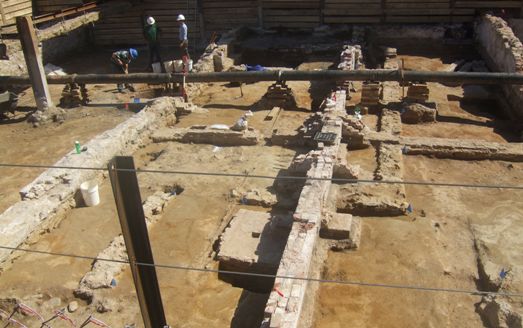 |
|